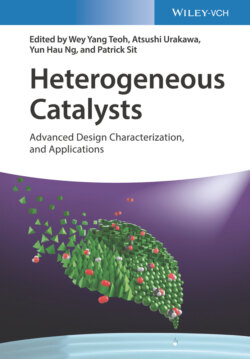Читать книгу Heterogeneous Catalysts - Группа авторов - Страница 84
6.4 Challenges and Perspective
ОглавлениеSACs, as a kind of frontier catalysts, have attracted widespread attention and been extensively studied in recent years. Various methods have been developed to synthesize SACs, as summarized above. Specially, chemical methods are the most commonly used. Chemical methods can be categorized into two general approaches, i.e. bottom‐up and top‐down strategies. Although the top‐down strategy has provided a possibility to construct thermally stable SACs, it is still challenging to find practical methods for synthesizing stable SACs with high metal loadings.
Liu et al. proposed that, in principle, there are three kinds of stability of SACs: intrinsic thermodynamic stability, kinetic stability, and dynamic stability. They suggested that the stability of SACs may depend not only on the support but also on the reaction conditions that are difficult to ascertain and vary from one system to another [70]. Strong metal–metal bonds or coordination bonds with O, N, S, or other atoms on supports may be the key for the stability of SACs. However, it is still challenging to regulate and control such metal–support interaction directly and efficiently. So far, successful examples on SACs are still limited in number [17, 18, 50, 71–73]. This situation calls for more fundamental research on detailed mechanisms.
For future research, it is desirable to develop novel, controllable, and facile synthesis methods for obtaining high‐loading SACs with excellent stability for use in practical conditions. More advanced in situ techniques and theoretical calculations should be used to understand the nature of metal–support interactions comprehensively. In addition, more examples on the high efficiencies of these SACs in various catalytic reactions should be actively sought.
